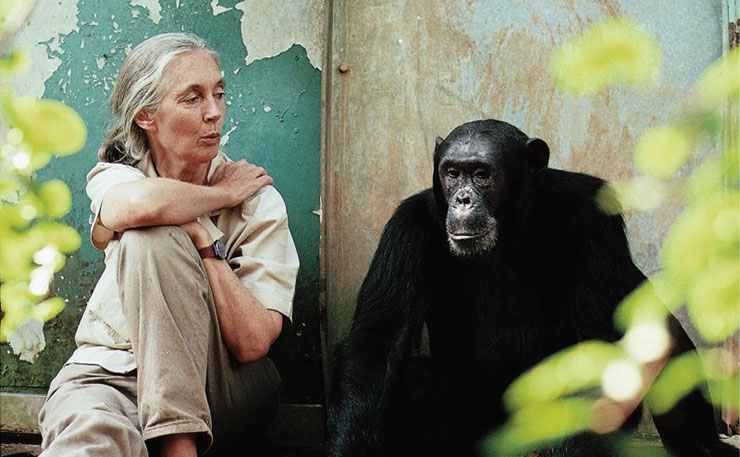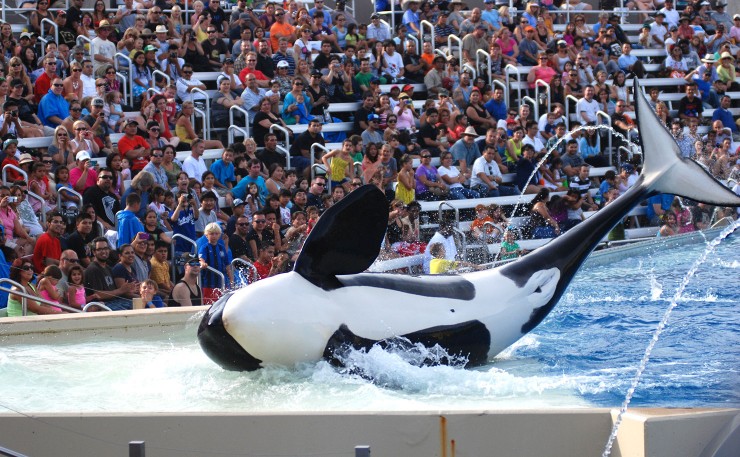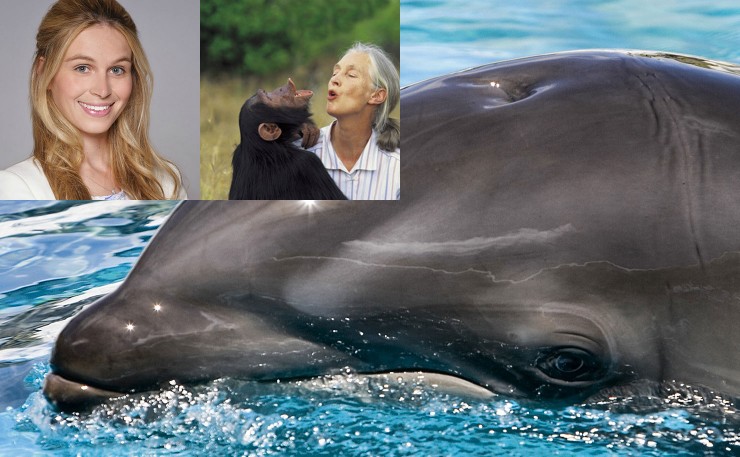The world famous Primatologist sparked an epiphany for the head of Australia For Dolphins. Sarah Lucas explains.
I’m aware when I say we should end dolphin captivity in Australia, I sound a bit ‘out there’ – but hear me out.
Like most Aussies, I visited Sea World as a kid, and the beaming photo of me cuddling a dolphin bears testament to how much I enjoyed it. The dolphin was smiling too, or so I thought at the time, and I didn’t for a moment think there was anything wrong with dolphin captivity.
But in the last few years, my mind has been changed. It started with a conversation with Dame Jane Goodall, the revered conservationist.
I had the privilege of sitting next to Jane for a brief time at a dinner, and I planned to use my 10 minutes to talk her ear off about dolphin hunting, which is the focus of my organisation.
As it turned out, Jane wanted to talk to me about dolphin captivity.
“How is it that we still keep these social and highly-intelligent animals in confinement?” she asked.
I was confused. Jane is famous for her work with chimpanzees – also highly-intelligent animals – but I had not heard her advocate against keeping chimpanzees in zoos.
In fact, I thought she was fairly pro-zoo.
“I think, in the right conditions, it’s possible for chimpanzees to be kept humanely in zoos,” she explained. “But dolphins and whales have particular characteristics which mean they can never be confined humanely.”

It was a light bulb moment for me. It’s not a matter of whether you’re for or against all animal captivity. Dolphins and whales need to be looked at as a special case.
Some of the reasons we should consider them specifically are obvious, when you think about it. For example, while chimpanzees can live in leafy, interesting enclosures, captive dolphins live in bare concrete pools.
This is because they are underwater animals, and plants, fish and other environmental stimuli can’t survive in chlorinated water.
But some of the other reasons captivity is inherently cruel for dolphins and whales are much less obvious. For example, as humans we don’t naturally know that captive dolphins are effectively blind.
We expect dolphins to see with their eyes, like we do. But in fact they “see” by bouncing sonar off objects to develop a mental image (in the same way we use light, intercepted by our eyes, to create a mental image of the world).
Inside the confines of four walls, a dolphin’s sonar bounces straight back, conveying no information. As one dolphin scientist puts it, a captive dolphin feels as we would feel in a pitch-black cell.
Indeed, captive dolphins routinely exhibit traumatised behaviours, such as banging their heads on concrete walls, biting gates and floating lifelessly in a coma-like state.
Sadly for dolphins, we humans don’t easily identify their signs of discomfort, because to us, they always appear to be smiling. In fact, a dolphin’s upturned mouth is just an evolutionary adaption that helps with catching fish. It says nothing about the dolphin’s emotional state.
It is because of welfare concerns that, around the world, it is rapidly becoming much less ‘out there’ to be opposed to dolphin captivity.
Many European countries, including the UK, have already banned the practice. This year has seen new anti-captivity bills introduced in Canada and in the US. SeaWorld, the world’s largest chain of marine parks and worth billions, saw its profits plummet by 84 per cent this year as visitors shunned the parks in protest.

It seems to be only in Australia, where two marine parks still operate (one in NSW and one in Queensland), that practices are not changing to reflect what we now know about dolphin welfare.
This is a shame, because Australia is a world leader in protecting wild dolphins and whales. We even took Japan to court to stop Antarctic whaling.
In the 1980s we were also ahead of the game in protecting captive dolphins. A federal Senate Select report found that “cetacea in captivity have suffered stress, behavioural abnormalities, high mortalities, decreased longevity and breeding problems” and recommended that dolphin captivity be phased out in Australia.
The subsequent 30-years of scientific research about dolphin welfare only reinforces the Committee’s recommendation.
So now I’m ready to say it with no fear of being branded a radical: We should listen to this vast body of science, to the Senate Committee (and to Dame Jane Goodall) and do what’s right by captive dolphins in our care.
This means joining the rest of the world in taking legislative steps to phase out dolphin captivity in Australia.
* Please consider subscribing to New Matilda. We’re a small, independent media outlet that relies almost entirely on reader subscriptions to survive. Subs packages start from just $6 per month.
Donate To New Matilda
New Matilda is a small, independent media outlet. We survive through reader contributions, and never losing a lawsuit. If you got something from this article, giving something back helps us to continue speaking truth to power. Every little bit counts.





